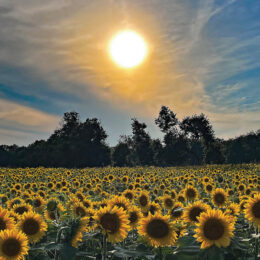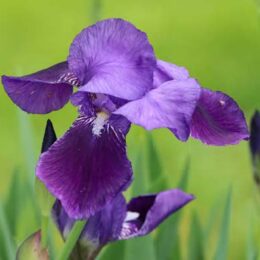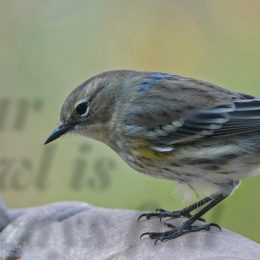By Jack Spaulding
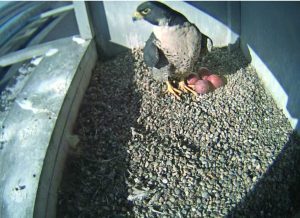
A peregrine falcon momentarily stands up to reveal four eggs in a screen capture from mid-March.
The reintroduction of the peregrine falcon is a real success story in Indiana and the nation. Biologists have brought the birds back from the brink of extinction with nesting pairs across the Midwest.
Peregrines are now commonly seen in special places in Indiana, but it wasn’t always so. Consider:
• Prior to 1940, peregrine populations were fast declining due to habitat loss, shooting, egg/chick collecting and human disturbance.
• From 1940 to the early 1960s, peregrine populations declined precipitously and widespread due to the indiscriminate use of DDT and other pesticides.
• By 1965, peregrine falcons no longer nested east of the Mississippi River; and the western populations had declined by 90 percent.
Then, things began to turn around. In 1970, the American Peregrine Falcon was listed as endangered by the U.S. Fish and Wildlife Service. And, in 1972, DDT was banned from use in the United States.
In 1987, the first successful nesting of a pair of peregrine falcons since the early 1960s occurred in the Midwest. Two years later, a pair of peregrines was discovered nesting in East Chicago, Indiana, and three young falcons fledge. It was the first documented nesting record of peregrines in Indiana in over 50 years.
Peregrines were officially reintroduced into Indiana beginning in 1991 with 15 young birds in Indianapolis. By 1999, eight pairs were nesting and a record 24 young were fledged from seven successful nests. Citing the continuing success of the reintroduction program, the U.S. Fish and Wildlife Service removed the peregrine falcon from the Endangered Species List.
In 2000, nesting pairs were present at eight nesting territories. Each pair successfully reared young with a near record total of 23 chicks reaching flight stage. At that point in the recovery, Indiana’s peregrines produced 130 fledglings since 1989.
From 2001 through 2012, peregrine falcons continue to do well in Indiana, with nine to 14 successful nests each year. In 2012, an unprecedented 38 chicks fledged from 14 nests. Between the years 1989-2012, peregrines in Indiana have fledged 477 young.
In 2013, the status of peregrine falcons in Indiana changed from state endangered to a species of special concern. The species is still protected under the Migratory Bird Treaty Act.
In 2016, 22 locations had peregrines and 15 nesting attempts were documented.
Visitors to the website address http://bit.ly/1xzB06U can learn how to help support peregrines along with more than 750 endangered and nongame animals in Indiana. Wildlife Diversity staff within the Division of Fish & Wildlife oversee the management of the endangered and nongame species to prevent the loss of wildlife diversity in Indiana. All of the funding comes from Hoosiers who donate to the Indiana Nongame Fund. No state tax dollars are used.
While you are online … visit IPL’s “falcon cam” from a Petersburg nest at http://bit.ly/2mu4hzr and check out the peregrine falcon. It is a live-time chance to see the growing future of Indiana’s peregrines.
Jack Spaulding is a state outdoors writer and a consumer of RushShelby Energy living along the Flatrock River in Moscow. Readers with questions or comments can write to him in care of Electric Consumer, P.O. Box 24517, Indianapolis, IN 46224; or email jackspaulding@hughes.net.
Bird watching online
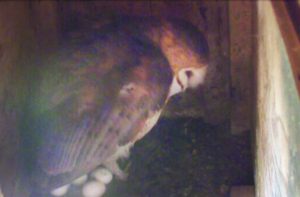
A barn owl is seen with its eggs in a screen captured image from the DNR’s barn owl camera
While you’re online learning more about Indiana wildlife and checking out the nesting falcons, don’t forget about the Indiana Department of Natural Resources’ barn owl nest cam in Southern Indiana.
Jack wrote about barn owls and a lofty nest camera eavesdropping in on them in the June 2016 issue.
The goal of the webcam is to promote public interest in birds and raise awareness about efforts to support barn owls. More information about nest boxes is at wildlife.IN.gov/3382.htm.
The barn owl webcam can accommodate 20 viewers at a time and is at www.wildlife.IN.gov/8183.htm.

